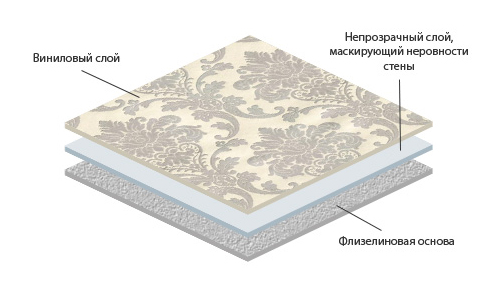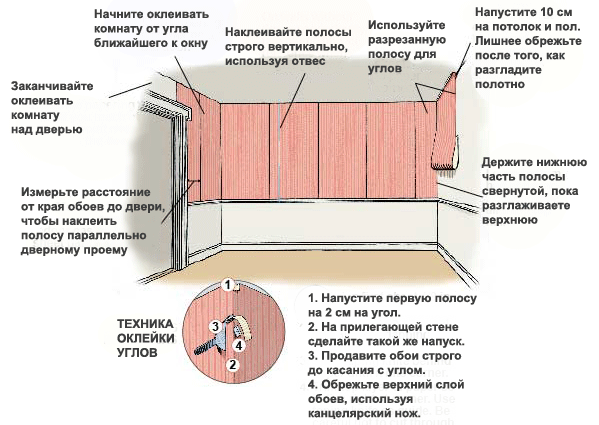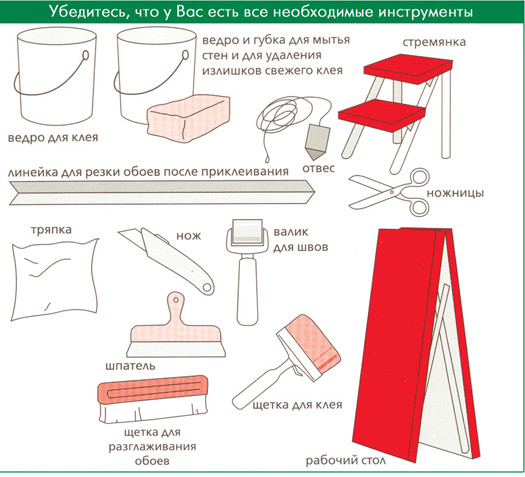Non-woven wallpaper is a material forwall coverings, produced and supplied in rolls. They contain two layers: the actual non-woven material and a polymer coating. The purpose of the latter is protection, which also makes it possible to wash the wallpaper. This type of wallpaper is made on the basis of cellulose. Non-woven wallpapers are classified as “breathing” materials, so they do not absorb odors. The structure of layers of non-woven wallpaper.Since the cost of non-woven products is significant, it is necessary to know some points that are used when choosing and buying them. How to glue non-woven wallpaper will be discussed below.
The structure of layers of non-woven wallpaper.Since the cost of non-woven products is significant, it is necessary to know some points that are used when choosing and buying them. How to glue non-woven wallpaper will be discussed below.
Preparation of the wall surface for bonding
 Scheme for gluing non-woven wallpaper.Pasting non-woven wallpaper requires exceptional evenness of the walls, as well as their smoothness, dryness, strength, and cleanliness. There should be no peeling coatings, greasy stains, traces of old glue, or mold visible on the wall. Newly plastered surfaces should be given time to dry. After which they can be primed. Before pasting, specialists analyze the nature of the surface to be pasted. They use:
Scheme for gluing non-woven wallpaper.Pasting non-woven wallpaper requires exceptional evenness of the walls, as well as their smoothness, dryness, strength, and cleanliness. There should be no peeling coatings, greasy stains, traces of old glue, or mold visible on the wall. Newly plastered surfaces should be given time to dry. After which they can be primed. Before pasting, specialists analyze the nature of the surface to be pasted. They use:
- test by soaking;
- samples with scratching;
- testing with sticky tape;
- determination of alkalinity of coatings.
Then carry out the required work so thatto obtain the necessary surface qualities for pasting. The correctness of the activities at this stage serves as a guarantee of the impeccable execution of pasting works. This step is the most labor-intensive, but a lot depends on it. Therefore, the main thing here is not to spare time and effort for all procedures. Return to the table of contents</a>The process of pasting non-woven wallpaper Tools for gluing non-woven wallpaper.
Tools for gluing non-woven wallpaper.
Return to Contents</a>
Possible difficulties in gluing
Even professionals often have problemscertain difficulties when pasting with non-woven wallpaper. For high-quality pasting of such complex areas as a window niche, doorway, internal and external corner, rounded arch, it is important not only to know, but also to master the intricacies of pasting technology. A guarantee for the successful completion of the process is excellent knowledge of the varieties and properties of wallpaper, adhesives, and methods of preparing surfaces. Real wallpapering masters have mastered all this to perfection. Non-woven wallpaper is very easy to care for: if there is no significant contamination, it is cleaned with a rag or vacuumed. When the time comes to change the finish, removing this coating will not be difficult. Wallpaper is removed using the "dry" method, tearing it off in one piece. Non-woven wallpaper is durable, beautiful, and safe. It is quite easy to paste it.


